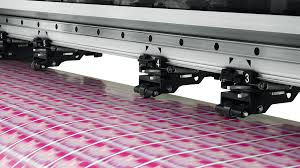In today’s fast-paced and technology-driven era, every industry is striving to transform its manufacturing and packaging into something faster, more accurate, and smarter. Label printing technology is one of the very important parts of this transformation. Speed and accuracy in labeling are essential, especially in high-speed production lines where every second counts.
This blog post will tell you how smart inkjet label printing technology has helped improve the manufacturing and logistics industry and why brands are now adopting solutions like the Epson LabelWorks printers.
Why is label printing important today?
- Need for speed and accuracy.
In a fast-paced production line, the process of applying labels to each pack is very fast. Whether it is a brand name, barcode, or any regulatory information, every print should be clean, accurate, and durable.
- From branding to compliance
Today’s keywords not only display the product’s name and price, but they also show:
- QR codes and barcodes
- Manufacturing and expiry date
- Batch number
- Caution and safety symbols
- Colorful branding and visual elements
This is why the need for on-demand high-quality color label printers is increasing.
How inkjet label printing has evolved?
Inkjet printing is not new, but it is used in industrial marking. Although electric thermal printers are popular, inkjet printers have surpassed them in terms of size, flexibility, print quality, and speed.
Let’s discuss the major innovations behind this evolution.
1. High-speed on-demand printing
Today’s inkjet printers, especially those built for industrial and commercial applications, are capable of printing thousands of labels per minute. Printers like the Epson ColorWorks color label printer are made to support on-demand printing, meaning companies can print the exact number of labels they want to print without waiting much. This is changing for industries like:
- Food and beverage industry
- Pharmaceutical industry
- Electronic industry
- Logistics industry
2. Colorful and high-resolution prints
Unlike traditional black-and-white thermal printers that were used in the past, new inkjet label printers offer full-color, rich, and clear printing. This helps manufacturers:
- Exactly matching the labels with brand colors
- Print warning and caution symbols in the required colors (e.g., yellow GHS hazard symbol)
- Make labels more vibrant and attractive for store displays.
- The high-resolution output makes small text, images, and barcodes clearer and easier to read.
- Improved ink quality
Today’s advanced and high-quality pigment-based inks print labels that stay longer. These printer ints are:
- Water and moisture resistant
- Smudge-proof
Fade-proof and chemical resistant.
This durability and quality make these labels stay in even harsh environments such as refrigerated storage, outdoor handling, and chemical packaging.
4. Seamless integration with production lines
The innovative solution makes printers work more smoothly as inkjets and integrates directly into the product software. Here is the implication:
- Labels can be automatically added to the WMS of the ERP.
- The printer’s print screen is whit, and the screen sensor is scanning the code.
- Only minimal manual intervention is required.
This minimizes human error and maximizes the efficiency of the production line.
5. Data Print Variable (DPV)
One of the biggest technological leaps in inkjet printing is variable data printing. This feature allows each label in the print to have different information, such as:
- Barcode and numbers
- Date of expiry
- Date of manufacturing
- Personalized branding
VDP is important for the industry that needs serialization, control, customization, and batch tracking.
6. Green Printing
Modern inkjet printers are being designed with environmental concerns in mind. They reduce ink waste by using more efficient printing methods and do not require multiple preprints, which adds more waste.
7. Cost-Efficient Labeling
Apart from their eco-friendly nature, these label printers help save costs by enabling recyclable label materials and reducing material usage. Both advantages enable brands to lower their environmental impact as well as reduce the overall cost of printing in the long run.
Real-Life Applications of Next-Generation Inkjet Label Printers
Below are some samples of how companies are profiting from technological leaps in inkjet label printing:
- Food Packaging
Smart color inkjet printers are utilized for printing nutrition facts, expiration dates, and branding on product labels at high speed.
- Chemical Industry
Manufacturers adhere to GHS requirements by utilizing color print technology for printing warning labels with red borders and symbols.
- E-commerce Warehouses
Warehouses incorporate inkjet label printers into their inventory systems to label shipments and products in real time.
Final Thought
Inkjet label printing has come a long way, and it now perfectly complements high-speed production lines in various industries. With the evolution in speed, color quality, and integration, as well as ink technology, today’s inkjet printers enable businesses to remain compliant, efficient, and brand-consistent.
If you are seeking to enhance your labeling solution, adopting technologies such as Epson ColorWorks color label printers may be the next step in achieving a smarter, faster, and more efficient production world.

